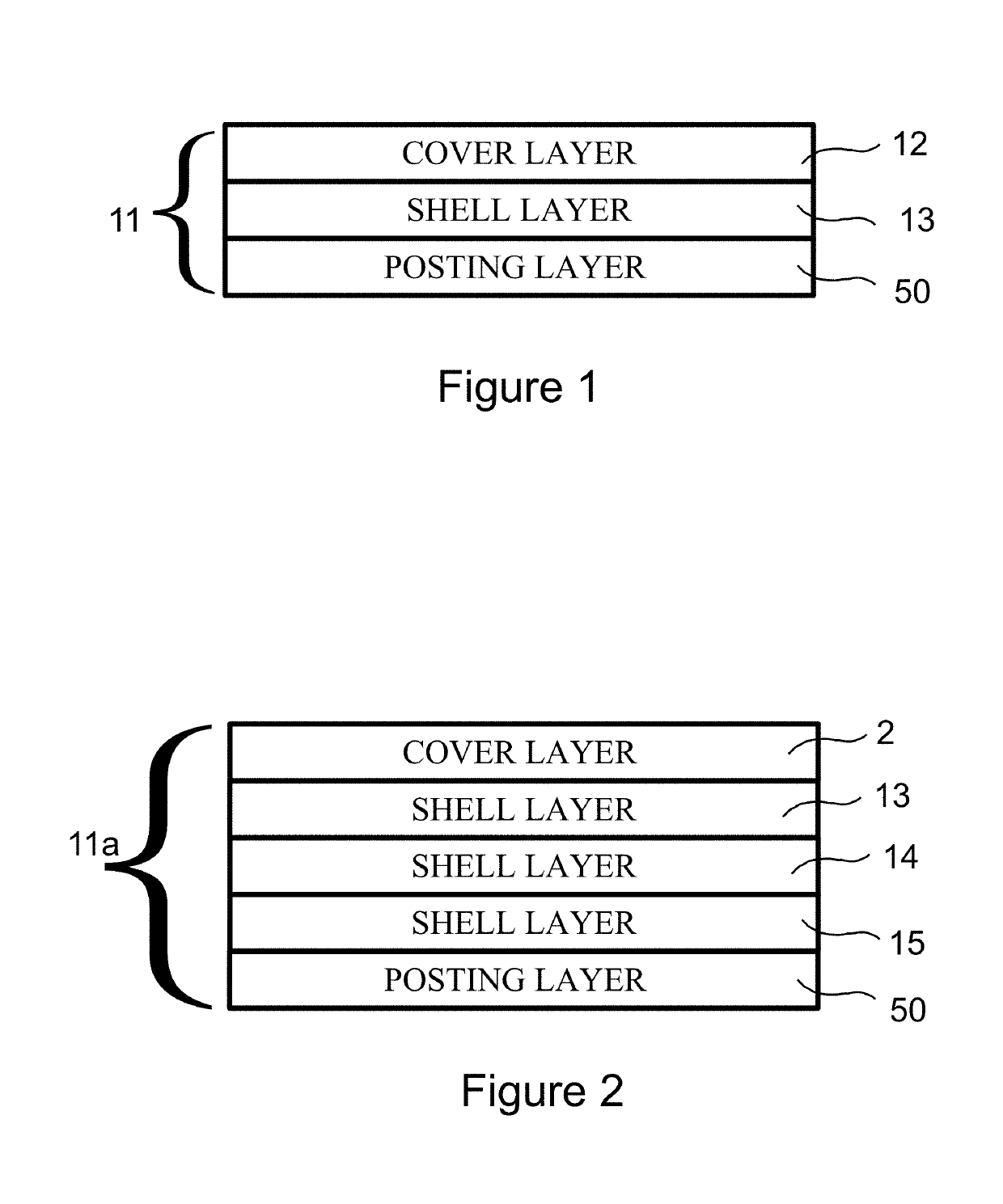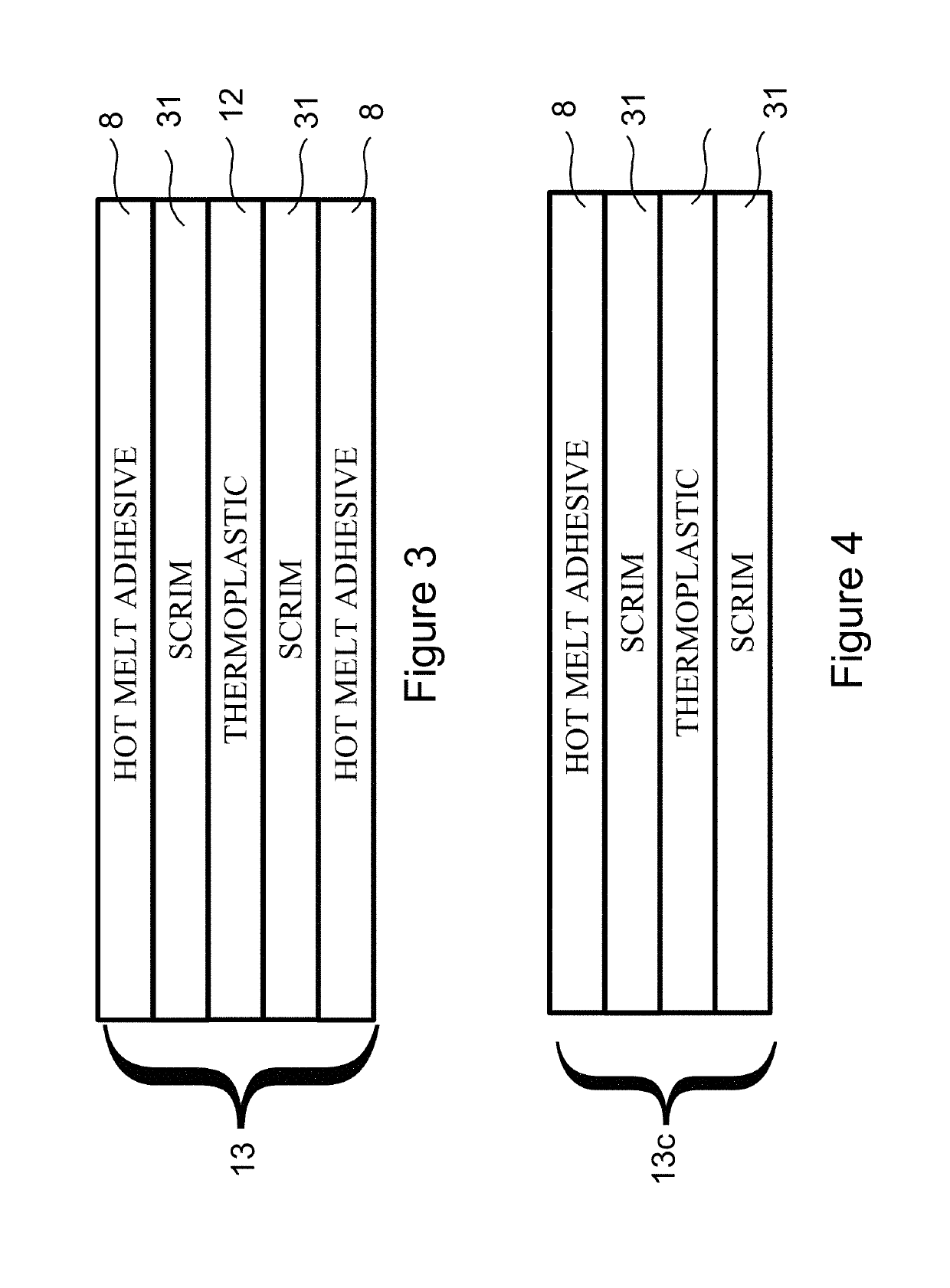Custom multi-layered orthotic/orthosis, and method for forming
a multi-layer, orthotic technology, applied in the field of orthotic appliances/orthosis, can solve the problems of low benefit, high cost of custom orthotic appliances/orthosis using the plaster casting method, and high time-consuming current processes for creating orthotics, so as to prevent rocking
- Summary
- Abstract
- Description
- Claims
- Application Information
AI Technical Summary
Benefits of technology
Problems solved by technology
Method used
Image
Examples
Embodiment Construction
[0060]Referring to the drawings in particular, the orthotic blank 11 shown in FIG. 1 includes a cover layer 12, a shell layer 10, and a posting layer 50. In another embodiment, such as shown in FIG. 2, the orthotic blank 11a includes a cover layer 2, a plurality of shell sheets 13, 14 forming the shell layer 10, a reinforcing stabilizer layer 15, and a posting layer 50.
[0061]FIG. 3 shows a schematic cross sectional view of one embodiment of a shell sheet 13. The shell sheet 13 has a center ply formed of a thermoplastic material 12 having a molding temperature in the range of 140-160° F. This thermoplastic material 12 preferably includes polycaprolactone (C6H10O2)n and a plurality of fibers to reinforce the thermoplastic material 12. On either side of the thermoplastic ply 12, on diametrically opposite sides, there is a scrim ply 31. On each side of the scrim ply 31 diametrically opposite the thermoplastic 12 is a melt adhesive / cement ply 8.
[0062]It is also possible for each side of ...
PUM
 Login to View More
Login to View More Abstract
Description
Claims
Application Information
 Login to View More
Login to View More - R&D
- Intellectual Property
- Life Sciences
- Materials
- Tech Scout
- Unparalleled Data Quality
- Higher Quality Content
- 60% Fewer Hallucinations
Browse by: Latest US Patents, China's latest patents, Technical Efficacy Thesaurus, Application Domain, Technology Topic, Popular Technical Reports.
© 2025 PatSnap. All rights reserved.Legal|Privacy policy|Modern Slavery Act Transparency Statement|Sitemap|About US| Contact US: help@patsnap.com



